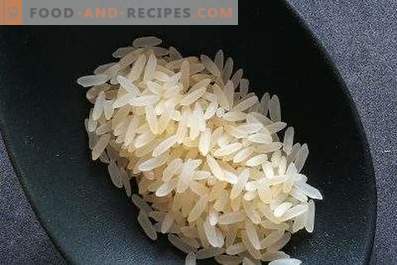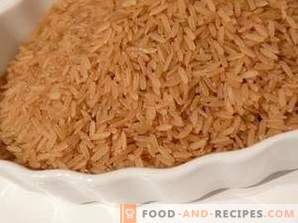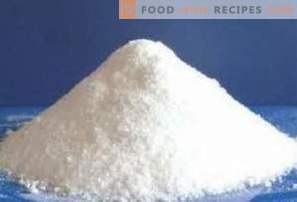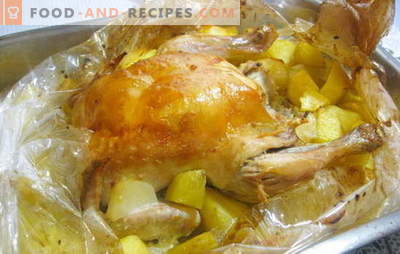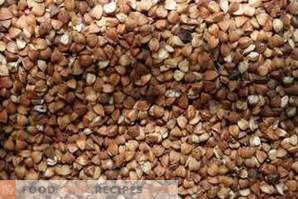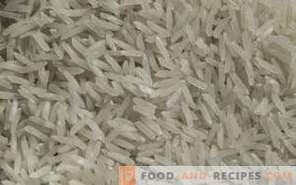
Rice - the culture is very old. For the first time, it began to be eaten more nine thousand years ago by the peoples living in the territory of modern Thailand and Vietnam. This tasty and healthy product spread all over the world from there and got deserved popularity in almost all countries. Today it is the most sought after cereal culture on the planet.
Over the millennia of cultivation, many species and varieties of rice have appeared. According to the grain shape, it is divided into three types: long-grain, round-grain, and medium-grain. By the way of processing rice is brown, white or yellow.
Rice is a universal cereal. In the kitchens of different nations, it is used as an independent dish or side dish. They prepare drinks, including alcoholic, as well as delicious desserts.
Rice is a source of essential amino acids for humans, as well as B vitamins that strengthen our nervous system, and potassium, which has a beneficial effect on the functioning of the heart and blood vessels.
All this only confirms the value of rice for our diet, so no one will be glad if it is spoiled as a result of improper storage.
In what conditions is rice stored
In order to avoid trouble in the form of the appearance of larvae or bugs during the storage at home, it is imperative that rice be created to meet the requirements.
As with many other cereals, the temperature conditions preferred for rice groats are in the range of 5 to 15 ° C. The air humidity in the storage area should be quite small, not higher than 70%, and even better - 60%. Extremely undesirable hit on the rump of sunlight.
Storage duration
Grain producers are well aware that under appropriate conditions, it can be stored for a very long time, while remaining usable. But the rice purchased in the store, it is better to use for several months, although subject to storage conditions, it may well lie more than a year. Grinded rice in general can not spoil for several years. However, if the cereal in your house is stored for more than 6 months, then it is better to ignite it before eating.
If you store boiled rice, then it should be done only in the refrigerator. The shelf life of any prepared rice dish should not exceed three days.
How to choose the right
You should carefully examine the cereal before buying, so that the rice from the store can be stored at home for a long time. It should not be stuck together grains, black blotches and the more bugs or larvae. If the packaging does not allow to see the state of the cereal, then carefully read all the markings: date of manufacture, shelf life, information about the manufacturer, etc.
What is better to store
After purchasing the cereal, it is necessary to pour it into a more suitable container, but in no case in a plastic bag. Under such conditions, the croup lacks air and it absorbs the smell of polymer, becoming very unpleasant to the taste. If the package is not tightly tied, then there is always the danger of infection by insects.
The best option is to store rice in tightly closed glass containers: in ordinary jars under a plastic lid or containers with ground-in stoppers. Special plastic containers are also suitable, but metal cans are better not to use: they rust very quickly and do not create tight storage conditions.
Storage Features
To keep your croup longer, it's a good idea to know a few secrets.
- Just bought rice is better to roast in the oven or directly on a dry frying pan. It will kill all possible parasites, if they are in it. The processing of the product in the microwave for 5 minutes also works.
- Frost contributes to the death of any living organisms, so that the bugs and larvae placed together with the croup in the freezer chamber will die for four days. It is not recommended to freeze rice longer, and there is no need. In winter, you can bring cereal to the balcony.
- In order to keep your groats longer, you can provide a container of rice with a clove of garlic or put a bay leaf. They will scare away insects.
- A linen sack of salt will take excess moisture from a jar of cereal.
